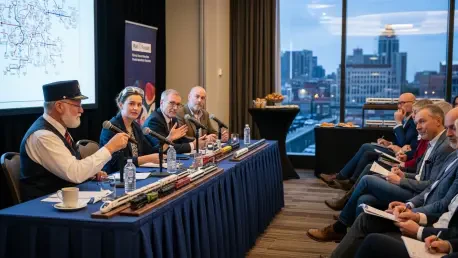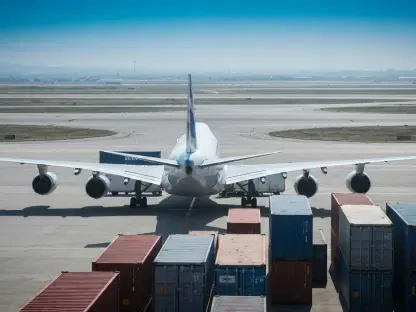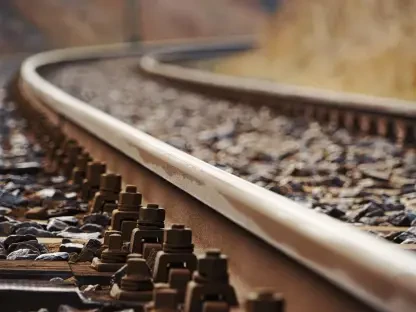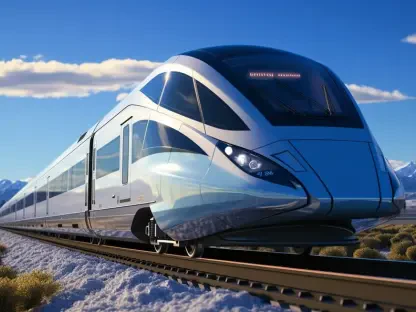With decades of experience in the logistics industry, spanning supply chain and delivery, Rohit Laila brings a wealth of knowledge and a passionate perspective on technology and innovation in the rail sector. In this engaging conversation, we dive into the key takeaways from a recent Rail Forum event focused on maximizing opportunities in the UK’s rail industry during the CP7 period. Our discussion explores pressing operational challenges, the transformative potential of digital solutions, significant funding initiatives for research, and the strategic shift toward viewing operations as a revenue driver. Rohit shares his expert insights on how innovation can shape the future of rail performance and reliability.
Can you give us an overview of the recent Rail Forum event focused on maximizing opportunities in CP7? What were the central themes that emerged from the discussions?
Absolutely, the Rail Forum event, titled ‘Maximizing Opportunities in CP7: Innovation for Industry Performance,’ was a pivotal gathering of rail leaders, technologists, and strategists. The central focus was on how innovation can address current challenges and boost industry performance during the CP7 period. Discussions revolved around operational bottlenecks, the urgent need for digital transformation, and reimagining operations not just as a cost but as a potential revenue source. It was a forward-looking conversation about aligning technical solutions with strategic goals to improve reliability and efficiency across the board.
What were some of the standout operational challenges highlighted at the forum, and why did they resonate with you?
Several operational challenges came up, but two really stood out. First, there was a lot of talk about how poor train performance directly impacts infrastructure, leading to increased wear and tear and limited maintenance windows. This creates a vicious cycle of delays and breakdowns. Second, the emotional and financial toll of delays on passengers was a sobering point—beyond just lost time, it affects trust in the system. These issues resonated with me because they highlight how interconnected the rail ecosystem is; a single disruption can ripple out and impact everything from infrastructure to customer satisfaction.
How do you think the disruptions caused by poor train performance affect the broader rail industry beyond just infrastructure issues?
The disruptions go far beyond infrastructure. When trains underperform, it erodes passenger confidence, which can lead to reduced ridership over time. Financially, it means lost revenue for operators and additional costs for compensating passengers or rerouting them. There’s also a reputational hit—people start viewing rail as unreliable compared to other transport options. For freight, delays can disrupt supply chains, impacting businesses that rely on timely deliveries. It’s a systemic issue that demands a holistic approach, focusing on both technical fixes and better communication with stakeholders to rebuild trust.
During the event, a significant funding plan for research and innovation in CP7 was discussed, amounting to over $250 million. What are the primary objectives of this investment, and how might it influence rail operations?
This $250 million funding for research and development in CP7 is a game-changer. The primary objectives are to cut emissions, reduce delays, and boost freight growth. It’s about creating a more sustainable and efficient rail network. This investment could revolutionize operations by accelerating the adoption of low-emission technologies, improving predictive maintenance to minimize disruptions, and optimizing infrastructure for freight, which often gets sidelined. If executed well, it could position the UK rail industry as a leader in green and reliable transport, setting a benchmark for others globally.
One speaker at the forum raised concerns about siloed data and manual processes. Can you explain how these issues hinder efficiency in the rail sector and what role digital tools might play in overcoming them?
Siloed data and manual processes are major roadblocks to efficiency. When data is stuck in isolated pockets, different teams can’t access or share critical information, leading to miscommunication and delays in decision-making. Manual processes, on the other hand, are time-consuming and prone to human error—think paper-based reporting or outdated systems for tracking maintenance. Digital tools can bridge these gaps by centralizing data, automating repetitive tasks, and providing real-time insights. For instance, digital platforms can enable predictive maintenance, flagging issues before they become problems, and improve coordination across the network, ultimately saving time and resources.
The emotional and financial impacts of delays on passengers were a key point at the forum. How do these effects extend beyond just lost time, and what can the industry do to mitigate them?
Delays do more than just waste time; they create stress, frustration, and even financial losses for passengers who miss meetings, appointments, or connecting transport. Emotionally, it can lead to a sense of helplessness or distrust in the system, especially for regular commuters. The industry can address this by improving transparency—real-time updates and clear communication go a long way. Investing in reliability through better maintenance and technology is crucial, as is offering fair compensation or alternative travel options when delays occur. Building a passenger-centric approach can help restore confidence and show that the industry values their time.
The Rail Technical Strategy was introduced as a framework for innovation. Can you elaborate on its goals, particularly in relation to sustainability and freight operations?
The Rail Technical Strategy is a comprehensive plan to drive system-wide innovation in the rail sector. Its goals are ambitious, focusing on creating a more sustainable, efficient, and adaptable network. For sustainability, it emphasizes low-emission operations, such as adopting cleaner energy sources for trains and infrastructure. For freight, it aims to make the network more accommodating, with infrastructure upgrades and optimized scheduling to handle larger volumes without clashing with passenger services. This strategy is about long-term thinking—balancing environmental responsibility with economic growth by ensuring rail can compete as a viable option for freight transport while reducing its carbon footprint.
There was a notable shift in mindset discussed at the forum—viewing operations as a revenue enabler rather than just a cost. How do you see this perspective changing the approach to innovation in rail?
This shift is transformative. Historically, operations were seen as a necessary expense, something to minimize. Now, there’s a growing recognition that efficient operations can drive revenue by attracting more passengers and freight clients through reliability and better service. This mindset pushes innovation toward solutions that not only fix problems but also create value—think technologies that reduce downtime or improve customer experience. It encourages investment in projects with clear business cases, linking operational improvements to financial gains, and fosters a more proactive, rather than reactive, approach to tackling industry challenges.
Emerging failure modes, like freight damage from vegetation or lift failures for disabled passengers, were highlighted as critical issues. Why are these becoming more significant, and what solutions might address them?
These failure modes are gaining attention because they directly impact service quality and inclusivity. Freight damage from vegetation on diversion routes, for instance, is becoming more noticeable as freight volumes grow and routes get repurposed, exposing gaps in infrastructure readiness. Similarly, lift failures for disabled passengers aren’t just inconvenient—they’re a barrier to accessibility, which is a legal and ethical priority. Solutions could include better route planning and vegetation management using drones or sensors for freight, and predictive maintenance systems for lifts to prevent breakdowns. These issues remind us that innovation must address both efficiency and equity to serve all users effectively.
Technologies like CableGuardian were mentioned as key to preventing outages in signaling power supplies. Can you explain how this kind of tech works and why it’s so important for rail reliability?
CableGuardian is a fantastic example of targeted innovation. It’s a monitoring system designed to detect faults in signaling power supplies—specifically the 650V systems that keep signals running. By continuously analyzing the health of these cables, it can predict potential failures before they cause outages, allowing for preemptive repairs. This is critical for rail reliability because signaling failures can halt entire sections of the network, leading to cascading delays. By minimizing these disruptions, such technology ensures smoother operations, reduces maintenance costs, and keeps trains running on time, which benefits everyone from passengers to freight operators.
What is your forecast for the future of rail innovation, especially in light of the discussions and initiatives like CP7?
I’m optimistic about the future of rail innovation, particularly with frameworks like CP7 setting a strong foundation. I foresee a significant push toward digital integration—think AI-driven predictive maintenance and data-sharing platforms becoming standard across the network. Sustainability will also be a major focus, with more investment in low-emission technologies and infrastructure upgrades to support freight growth. If funding remains consistent and collaboration between stakeholders improves, we could see a rail system that’s not only more reliable and efficient but also a key player in reducing transport’s environmental impact. The next decade could redefine rail as the backbone of modern, green logistics.









